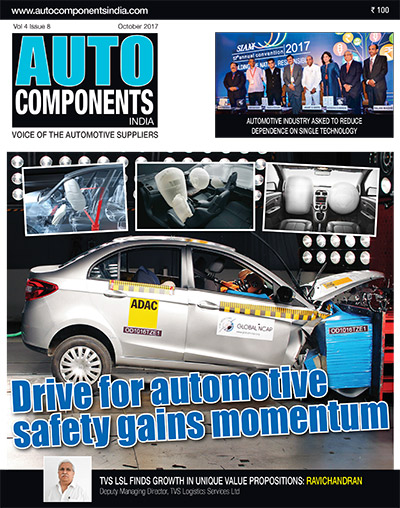The production and sales of vehicles in India have grown steadily over the years. Along with that, road accidents have also been on the rise. India has the dubious distinction of having the highest road fatalities in the world. On an average 142,000 lives are lost on roads each year. In order to enhance safety and to reduce fatalities the government of India has brought in the Safety Code effective from October 2017.
The Bharat New Vehicle Safety Assessment Programme (BNVSAP) is all set to start its operations from this month. It will be in tune with the norms of the Global NCAP. All new cars launched after October 1, 2017 must meet the new BNVSAP norms. The older running vehicles have until 2019 to comply with them. As India has a long way to go for vehicle and pedestrian safety, implementation of the new safety norms is a welcome imperative.
It is high time for the Indian society to adopt the ‘Vision Zero’ mission of the United Nations. The premier legislative and research bodies of the government should also advocate road safety as supreme. The automotive regulatory bodies should enforce the safety norms and guidelines. The vehicle manufacturers should adopt all available vehicular safety technologies and aim at safety leadership of their products.
It is only fair that vehicular safety is democratised across global automotive markets. It is the vision of Global NCAP that all cars must meet basic standards for both protection and crash avoidance by 2020. Though the new safety norms and technologies will make vehicles safer, will they dramatically improve road safety? In India it calls for a multipronged approach, better road engineering, traffic management, education and skilling of drivers, improved consideration for pedestrian mobility, to make roads safer. A system of scientific investigation and analysis of road accidents has never been more relevant for India.
Road safety in India is a multi-billion business opportunity as new norms and regulations are being enforced. Cars that do not have airbags would get only the lowest safety rating even after passing other tests. Sensing the upcoming demand, the safety component and equipment makers are increasing their capacities. According to a survey, it is predicted that by 2020, the overall revenues from the sale of airbags in the country would rise 11% a year and touch $2 billion.
In this issue we are highlighting some of the road safety initiatives of the automotive industry. All stakeholders must actively participate in this `Mission safety’ drive, which is gathering momentum, to make our roads safer.
Bhargav TS
Executive Editor
s.bhargav@nextgenpublishing.net






Leave a Reply